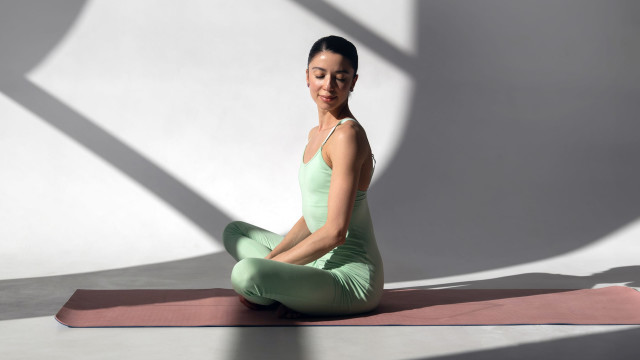Find Deep Healing Through Whirling

Our body is intrinsically designed to facilitate health, not illness. When we whirl — a movement-based meditation that involves spinning — we align to our body's natural design.
To understand this concept, pay attention to your physical form. Notice how the physical shape of your body supports or inhibits the inner functioning of your systems.
Our body is designed to self-correct, self-repair, and self-heal — it is an automated instrument of health. Joints are shaped in a specific way to facilitate motion. The lungs are shaped perfectly to allow maximum volume with each breath. Our ribcage is shaped to protect the heart and lungs. Our spine is shaped to support multidirectional movements — to stand, walk, jump, bend, etc.
Whirling can be used to support a return to the natural design and alignment of our body, allowing it to function in health. Whirling assists by reflecting our health to us, making us aware of any places where we are holding tension. Whirling does not cause anything to happen, necessarily, but it does allow energy to shift, bringing us back into a natural, healthy balance.
At the Center: The Spine
Every organized motion needs a fulcrum at the center. The spine is a fulcrum in the body — a midline axis around which the body is shaped and developed. The act of whirling also organizes around the spine by bringing awareness and consciousness to our spine, the center of orientation, and the fulcrum of our physical form. It is the center around which motion organizes itself.
How Our Bodies Hold Stress
Our body is a storehouse of all our experiences — the blissful ones that reflect vitality, good circulation, and wellbeing, as well as the traumatic ones that show up in joint restrictions, sluggish circulation, mental stress, emotional overwhelm, and spiritual distance.
When our bodies hold stress, illness, or challenges, the energy gets bound up and creates unhealthy fulcrums of inertia within our physiology.
Remember, a fulcrum is a point in space around which everything organizes itself. You can think of a fulcrum of inertia like a blockage in our bodies' natural flow. This energetic stagnation can affect circulation and joint mobility and tighten up tissue and fascia, all of which can affect our physiological functions.
Whatever event happens, if the body cannot process it, that energy can lock into any joint or organ — and sit there and compress. These fulcrums of trauma do not have any mobility or fluidity; they are frozen in place, and over time, they lend themselves to stiff joints, discomfort, and an unhealthy imbalance. These areas block energy from flowing and essentially impede our natural, healthy rhythm.
Whirling to Heal
Whirling is a beautiful way to unleash, unlock, and release any inertial energy fulcrums held within our system. When we whirl, all the energy in our body is stirred and moved, especially the inertial energy that holds traumas.
Whirling creates movement of energy, and in time helps to open up these fulcrums of stagnation. Whirling allows these inertial trauma fulcrums to rearrange as well as release. Muscles and tissues that have shaped themselves to hold the trauma start to unwind, loosening and opening up.
Whirling often brings up deep emotions like sadness and joy, and sometimes whirlers will release energy through tears or laughter. Regardless of whether we are aware, whatever we are holding within will be released and show itself. Whirling ensures that it is also integrated and regulated as this energy is released. The repetitive, organized motion of whirling supports the release of these bound-up tensions and allows them to be transformed and transmuted into meditative, grounded, and restful energy. This brings us healing.
Header photo: magical_light/Getty Images







